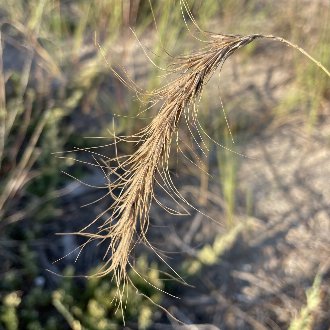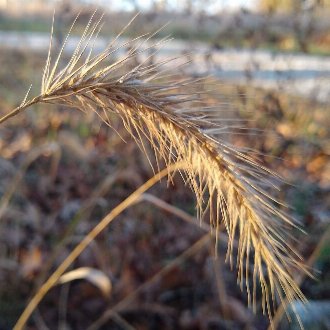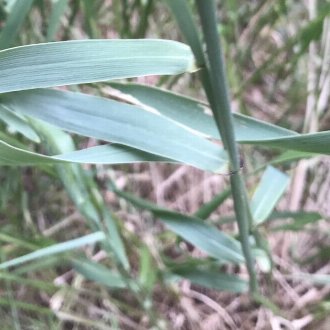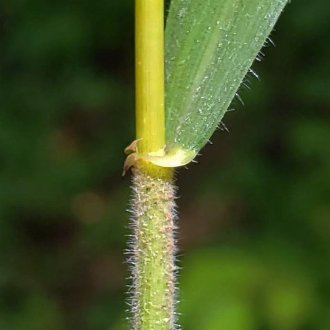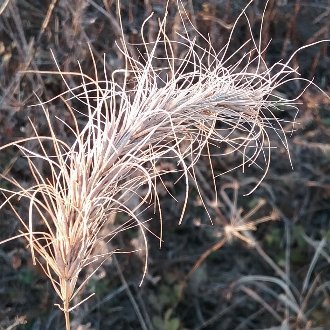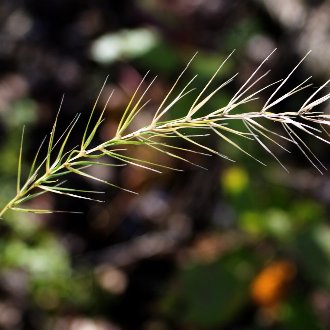Canada Wildrye vs Silky Wild Rye
This guide is under construction and has not been published yet. It may have errors. When in doubt, double-check other sources for definitive ID.These two species are frequently confused, particularly earlier in the season before the awns of E. canadensis curl back. Both have nodding spikes. E. canadensis prefers sunnier habitats and is found in a wider range of soil conditions, whereas E. villosus prefers shadier habitats and has a stronger preference for rocky, calcareous soils. In the south of its range, E. villosus is absent from sandy soils and moister sites.
Canada Wildrye (Elymus canadensis) | Silky Wild Rye (Elymus villosus) |
A short-lived perennial, cool-season grass native primarily to the great plains, also extending well into the west and northeast. | A perennial, cool-season bunchgrass native to eastern to central North America. |
Awns curl back strongly on mature spikes as they dry out later in the season. Photo © Matt Berger, CC BY 4.0. | Awns remain mostly straight and do not regularly curve back, even late in the season as spikes dry out. Photo © john_hall, CC BY 4.0. |
Foliage ranges from deep green to bluish in color. Leaf sheaths average less pubescent, often with hairs only around the edge, if present at all. Upper surface of leaf blades usually mostly hairless, ranging from smooth to rough to the touch, but not silky; if present, hairs are sparse. Photo © Tyler Cannon, CC BY 4.0. | Foliage deep green to yellowish-green, never bluish. Leaf sheaths average much more pubescent, usually conspicuous in photos, rarely not. Upper surface of leaf blades densely covered in fine hairs, silky smooth to the touch. Photo © aarongunnar, CC BY 4.0. |
Retains its seeds much longer, with many seeds remaining on the spikes into winter. Spikes usually turn completely brown before they begin shedding seeds. Photo from late November in Illinois. Photo © Mary Crickmore, Public Domain. | Sheds its seeds very early, with seeds often completely shed by winter, often even when the spike is still green. Photo from Wisconsin in October. Photo © aarongunnar, CC BY 4.0. |
References & External Resources
These short lists show only links helpful for ID. For a complete list of references and resources also covering other aspects of ecology, visit the links section of the full article on each plant, which is the first entry here.



